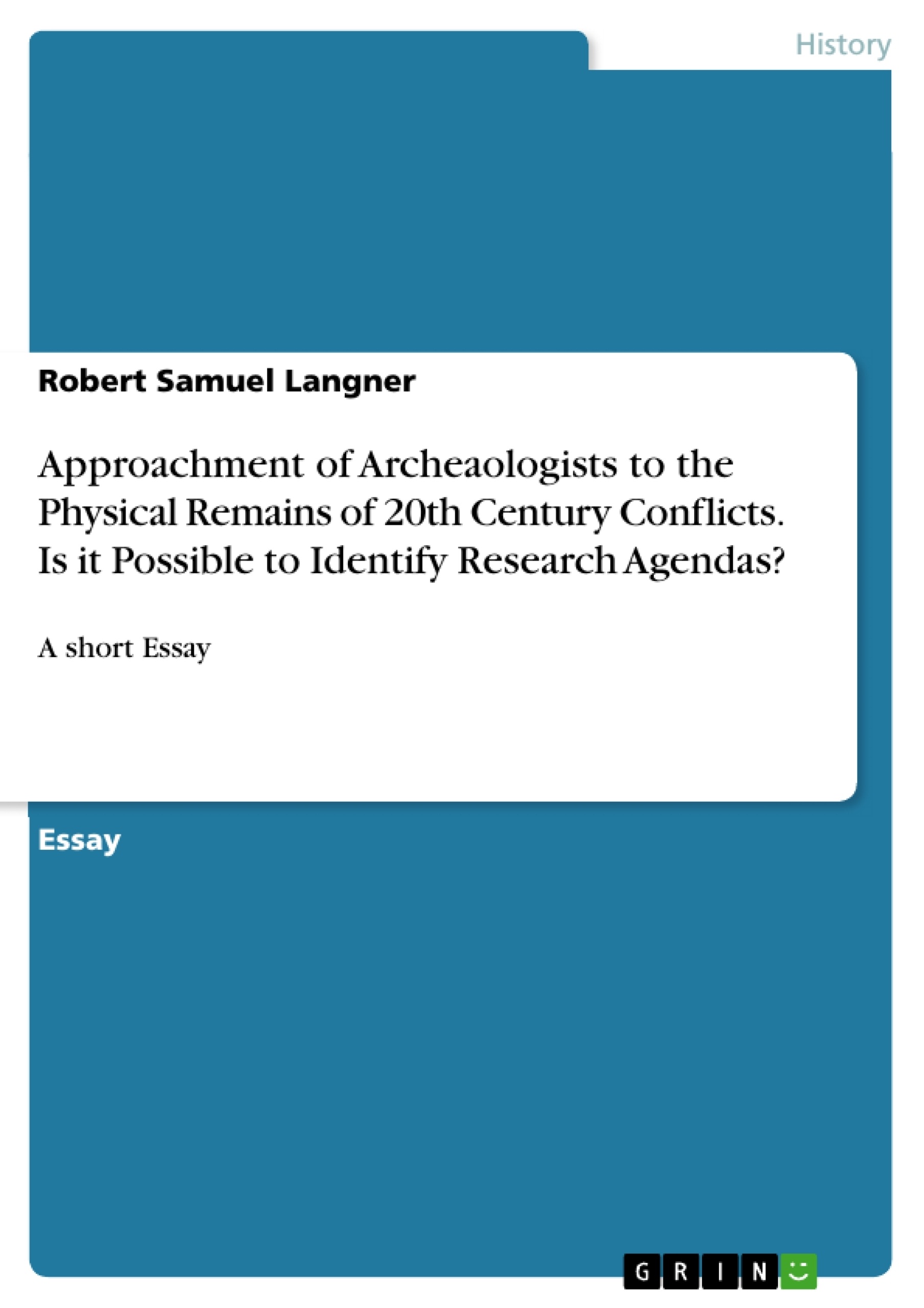Firstly, this essay will examine the question of how (conflict) archaeologists pursued the physical remains of military conflicts of the 20th century. The remainder of this work will further discuss whether it is possible to identify particular research agendas in the work of archaeologists and archaeological research projects. Finally, reference should be made to further desiderata of archaeological research and a summary conclusion will be drawn.
Archaeology is a science that explores the cultural evolution of humanity through scientific and humanistic methods. It has developed worldwide into a combination of different theoretical and practical disciplines. The field of interest of archaeology lies exclusively with humans and their material legacies, such as buildings, tools and works of art. It covers a period from the first stone tools about 2.5 million years ago to the present. The so-called contemporary historical archaeology, which deals with the anthropogenic remnants of human civilization during the previous century, is controversial within the discipline. In particular, a section of recent archaeology, conflict archaeology, refers to remnants that have survived in the context of military or other violent conflicts. Most of these are found on former battlefields.
Inhaltsverzeichnis (Table of Contents)
- How have archaeologists approached the physical remains of 20th century conflict?
- Is it possible to identify research agendas within this work?
- Suggestions for future avenues of research
- Archaeology as a science
- Contemporary historical archaeology
- Conflict archaeology
- The concept of the “battlefield”
- The excavation project “Hill 80”
- Hill 80: A German military position during World War I
- Hill 80: Location and strategic importance
- Hill 80: Fortification and military use
- The excavation project “Dig Hill 80 Whitesheet”
- Financing the excavation
- The excavation area and findings
- The impact of the war on the landscape
Zielsetzung und Themenschwerpunkte (Objectives and Key Themes)
This essay examines how archaeologists have approached the physical remains of 20th century conflict, specifically focusing on the excavation of Hill 80, a German military position during World War I. It then explores whether it is possible to identify research agendas within this work and suggests potential avenues for future research in the field of conflict archaeology.
- Approaches of archaeologists to the physical remains of 20th century conflict
- Research agendas in conflict archaeology
- The role of crowdfunding in archaeological projects
- The importance of interdisciplinary collaboration in archaeology
- The ethical considerations of excavating war-torn landscapes
Zusammenfassung der Kapitel (Chapter Summaries)
The essay begins by defining the field of conflict archaeology and its focus on the material remnants of military conflicts, including battlefields, fortifications, and other traces of violence. It then introduces the excavation project "Hill 80" as a case study for exploring how archaeologists have addressed 20th-century conflicts and the research agendas evident in their work.
The essay delves into the historical background of Hill 80, highlighting its strategic importance during World War I and describing the extensive network of bunkers, trenches, and other military structures that were built in the area. It then provides a detailed account of the "Dig Hill 80 Whitesheet" project, including the challenges of financing the excavation through crowdfunding, the international team of archaeologists and historians involved, and the discoveries made during the excavation, such as trenches, shell funnels, and underground barracks.
The essay also examines the impact of the war on the landscape, particularly the widespread destruction caused by artillery fire and the subsequent filling of shell holes and trenches with soil. It concludes by reflecting on the importance of the excavation project in contributing to our understanding of 20th-century conflict and suggesting potential avenues for future research in the field of conflict archaeology.
Schlüsselwörter (Keywords)
The key focus of this essay is conflict archaeology, specifically concerning the physical remains of 20th-century military conflicts. Important terms include "battlefield," "fortifications," "trenches," "bunkers," "shell funnels," "underground barracks," and "crowdfunding." The essay also highlights the importance of interdisciplinary collaboration between archaeologists, historians, and other specialists in understanding conflict.
- Arbeit zitieren
- Robert Samuel Langner (Autor:in), 2019, Approachment of Archeaologists to the Physical Remains of 20th Century Conflicts. Is it Possible to Identify Research Agendas?, München, GRIN Verlag, https://www.hausarbeiten.de/document/949547


